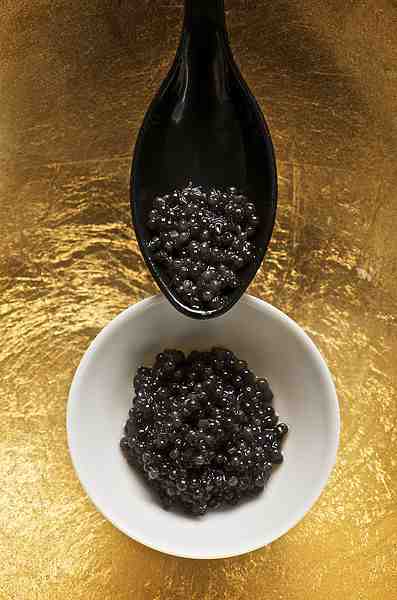Caviar
Environmentally Friendly Options And How To Serve
Caviar: Salted roe of sturgeon and other varieties of fish are popularly known as caviar. It is a delicacy used as a spread or garnish and with hors d’oeuvres. Caviar is a deviate of the Persian word Khag-avar which means “the roe generator” referring to roe of the sturgeon. There is good news for environmentally conscious American citizens who also happen to be connoisseurs of caviar. Now new varieties of caviars are available which are produced from paddlefish and sturgeon farmed in the US.
They taste good and at the same time are environmentally sustainable. The development of American caviar also addresses the worries of consumers and culinary experts about the decline of sturgeon in the Caspian Sea. Caspian Sea Sturgeon is the major source for the caviar needs of the world. Sturgeons produce the famous beluga.
Due to illegal trade, pollution, over fishing and habitat loss, there is a severe down spiral in the population of sturgeon in the Caspian Sea. SeaWeb, Pew Institute for Ocean Science and Natural Resources Defense Council of University of Miami is urging the American consumers to support American caviars as a better alternative and to safeguard the endangered species of the Caspian Sea. The caviar from Missouri and California are prominently supported by consumers, renowned chefs and media organizations. A number of top restaurants in New York removed Caspian Sea caviar from their menu and replaced them with American caviars in an effort to help the environmental groups protecting the Caspian Sea sturgeons.
Most of the party givers would like to know how much caviar should be bought for their party. It depends on the number of guests attending the party and how the caviar is going to be served. With every ounce of caviar, you can serve 8 to 10 guests. Quarter teaspoon or less of caviar can be used for garnishing purposes.
Black Beluga Caviar
With caviar on top of an appetizer and to enhance the taste of caviar predominantly, use half a teaspoon. Caviar should not be opened until it is needed. Leftovers should be promptly covered and stored in the fridge to be used within a couple of days.
If the taste of the caviar is to be retained, do not freeze it. When you freeze the caviar the roe membrane of the caviar gets toughened and the flavor is altered. If you do freeze it, slowly defrost the frozen caviar in the fridge for at least a day or two before you serve. Caviar should be refrigerated at 28 to 32 degrees by putting the tin in the meat shelf or surrounding the bowl containing caviar with ice.
What is caviar made from?
Caviar comes from a variety of sturgeon roe, which is typically obtained through 2 caviar harvesting processes. Once the roe is harvested from the sturgeon fish, the roe sacks are rubbed across a stainless steel mesh screen to separate the eggs from the membrane.
Which fish makes caviar?
sturgeon
Many countries include roe from other species of sturgeon, as well as other fish, such as salmon, trout, steelhead, carp, and whitefish, under the caviar label. According to U.S. Food and Drug Administration rulings, however, true caviar comes from sturgeon only.
Why is caviar is so expensive?
Why Is Caviar So Expensive?
The type of fish and its availability:
Caviar, to begin with, is always considered a luxury good, and the scarcity of the production factory that processes the fish also contributes towards the same. This contributes to the fish's purity and rarity, making it expensive in the market.
Is caviar actually fish eggs?
What Is the Difference Between Caviar & Fish Roe?
Caviar is delicacy made from the roe of fish in the Acipenseridae family, more commonly known as sturgeon. That's an important distinction; while the fish eggs are roe, but only sturgeon roe can be considered caviar.
What is the most expensive caviar?
What is the Most Expensive Caviar in the World?
Beluga Caviar
Beluga Caviar: The Most Expensive Caviar
Beluga caviar is the most expensive caviar in the world, and it comes from the Beluga sturgeon that is found in the Caspian Sea. The Caspian Sea is the largest inland body of water in the world, and it is home to four species of sturgeon: Beluga, Ossetra, Sevruga, and Sterlet.
InternetBusinessIdeas-Viralmarketing Home Page
Tweet
Follow @Charlesfrize










New! Comments
Have your say about what you just read! Leave a comment in the box below.